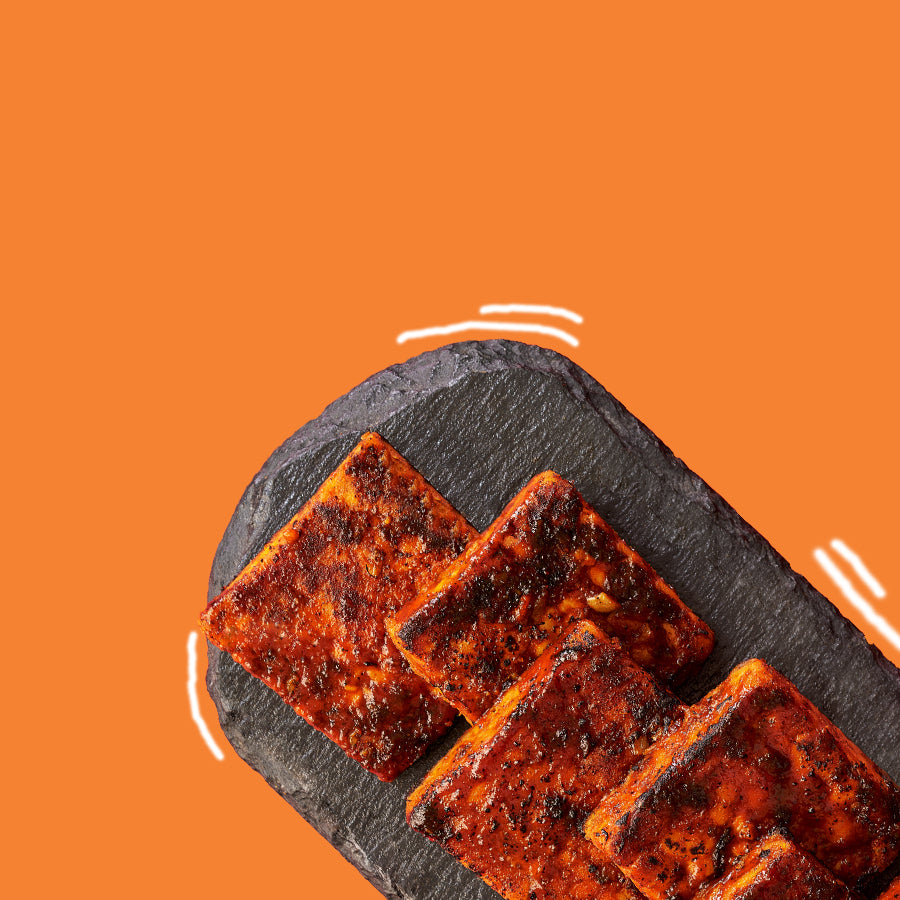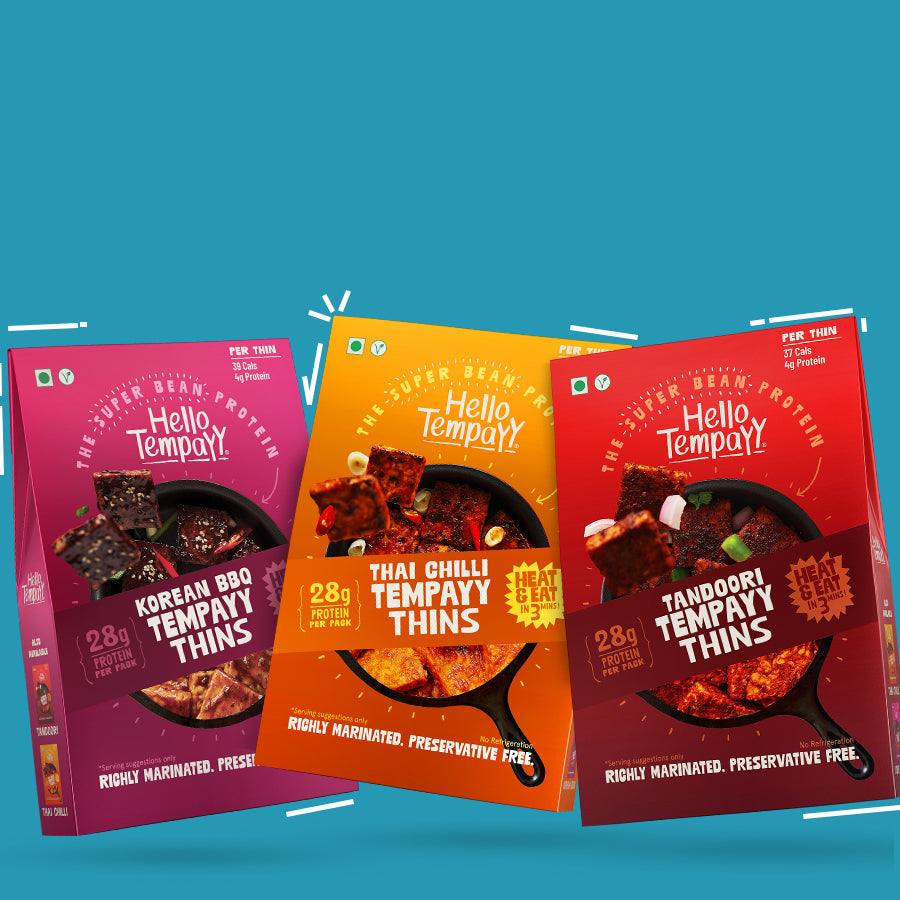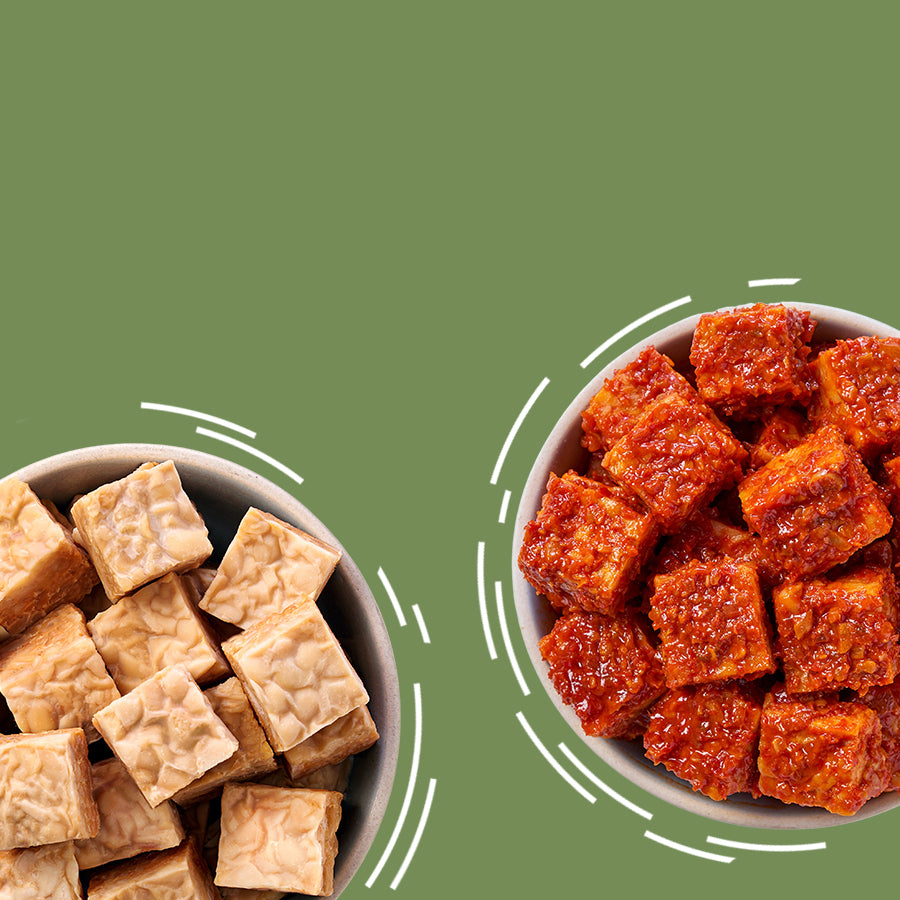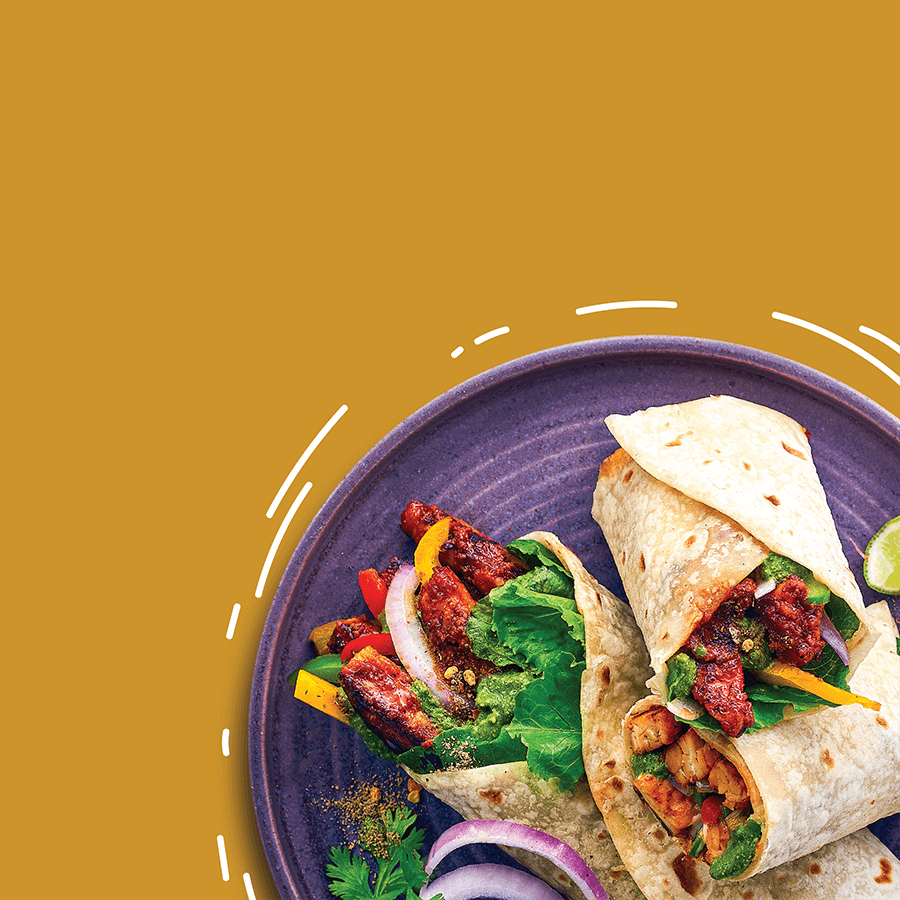Paneer Vs. Tempeh: Which is The Healthier Choice And Why
How does Tempeh stack up against paneer? Does Tempeh have more protein content than Paneer? Which of the two is the healthier choice?
If those are questions you are pondering while making your next meal plan, you are in the right place.
In this detailed Paneer vs.Tempay article, we dive deep into the nutritional values, flavour, texture, ease of cooking, health benefits, etc., to help you understand the differences between the two.
Let's jump straight to it.
How Are They Made
Tempeh is made by controlled fermentation of whole soybeans with the help of starter culture (Rhizopus Oligosporus or Rhizopus Oryzae). These Soybeans are first soaked, dehulled, cooked, and then fermented for 36 hours.
This fermentation gives the Tempeh most of its nutritional values and breaks down the soybeans' starch, making them easy to digest.
As for paneer, it is made by adding a food acid like lemon juice, vinegar, citric acid, or curd to hot milk. This helps break the curds from the whey. Once that is done, the water is removed from the curd using muslin or cheesecloth, and the excess water is pressed out.
Both are good vegetarian protein sources, but Tempeh is more versatile and has more nutritional value than paneer. Below, we will tell you all about it.
Nutritional value (Per 100gm)
Protein Content
Hello Tempayy's Tempeh contains 19g of protein and is a complete protein having all 9 essential amino acids. Compared to it, 100g packs of paneer have 14-16g of protein ( Sometimes up to 20gm).
Paneer, being dairy-based, can be harder to digest for some, while Tempeh offers dairy-free, gut-friendly, easy-to-digest protein thanks to fermentation.
Also, Tempeh is not as calorie-dense as paneer (100g of Tempeh has 180 Kcal vs. roughly 350 Kcal from Paneer) and is also low in carbs and rich in fibre.
This makes Tempeh an ideal food for building lean muscle or weight loss (especially if you are vegan, vegetarian, or flexitarian and bored of paneer). In contrast, paneer can be a good option for those looking to bulk.
But you don't have to be a fitness professional to eat Tempeh. It is ideal for anyone who wants to switch to a healthier lifestyle, and here's why.
Carbs and Fibre:
Both Tempeh and Paneer are low carb sources, but Tempeh is a rich source of dietary fibre as well. 100g of Tempeh offers 8.5g of Dietary Fibre (28% RDA), while paneer does not offer any fibre. Fibre is essential for a healthy diet and helps with gut and digestive health. Fibre-rich foods also help with appetite control.
Both Tempeh and Paneer work for those on a Keto diet.
Fats
Hello Tempayy's Tempeh fat profile includes 6.8g (10% RDA) total fat and 1.4g ( 6% RDA) saturated fats (otherwise known as bad fats). Paneer has 22-25g of total fat and 12-15g of saturated fat. Tempeh has much lower fats and has a better proportion of good fats, making it the better choice for weight management and improving overall health.
Cholesterol.
Paneer contains 50-60mg of cholesterol. On the other hand, Hello Tempay's Tempeh comes with 0mg cholesterol making it the better choice for a healthier heart.
Iron
Iron ensures your vitals are functioning at optimum levels helping you stay energetic all day long. It also boosts the immune system (and we know how important that has been in the last 2-3 years). So you know you need a healthy dose of iron in your diet. Iron deficiency is also quite prevalent in India, especially among women and children.
This is why Hello Tempayy fortifies its Tempeh with Iron ensuring it gives you 30% of your recommended dietary allowance (RDA). Since paneer isn't fortified, it only gives you 12% iron.
Other Vitamins
Hello Tempayy Tempeh is also fortified with vitamin B-12, ensuring your body's blood and nerve cells remain healthy. It also packs a good dose of calcium at 13% RDA.
Calcium improves bone health, making Tempeh a superfood for people with osteoporosis. There's also potassium at 8% RDA and 8.5g (28% RDA) dietary fibre.
Paneer isn't fortified with vitamin B-12, and while it does contain more calcium, for anyone that needs a high-protein food with a high fibre, low-carb, low-fat, and no cholesterol profile, Tempeh is the way to go. Paneer works well for those looking for a calorie-dense source of protein.
Comparison Table Of The Nutrition Values For Tempeh Vs Paneer Vs Tofu
|
PER 100 gms |
TEMPEH |
PANEER |
TOFU |
|---|---|---|---|
|
Protein (g) |
19.0 |
16.0 |
9.0 |
|
Total Fat (g) |
6.8 |
22.0 |
4.8 |
|
Saturated Fat (g) |
1.4 |
14.0 |
0.7 |
|
Dietary Fiber (g) |
8.5 |
0.0 |
0.3 |
|
Net carbs (g) |
1.6 |
2.0 |
1.6 |
|
Gut Friendlly |
YES |
NO |
NO |
Other Health Benefits
Gut Health and Lactose-Intolerance
The fermentation of the soybeans with the starter culture means Tempeh is rich in probiotics (gut-friendly bacteria and yeasts). So with Tempeh, you do not have to worry about gastrointestinal issues.
It is also lactose-free, unlike paneer. So if you are lactose-intolerant and need a cleaner, healthier protein source (even healthier than tofu), Tempeh is a no-brainer.
Heart Health, Diabetes and PCOS
Tempeh, made with Soybeans, dates back to over 1000 years. The fermentation process removes most of the anti-nutritive molecules in soya.
Also, the Isoflavones are more bio-available. Daidzein and Genistein are 2 potent antioxidants that help lower the bad cholesterol LDL helping improve heart health. It is also highly beneficial for its estrogenic properties (Meaning its beneficial to Menopausal women).
And yes, soy products like Tempeh can also help you manage your diabetes and PCOS better. And you don't have to take our word alone for it. Linked are two studies that should clear any doubts you have about it.
Flavour and Ease of Cooking
Tempeh has a mild nutty flavour with a firm, earthy texture, while paneer, a cheese, is softer than Tempeh and has a milky flavour . Both Tempeh and Paneer can be used as cubes or can be minced.
Tempeh soaks flavours beautifully. Paneer only coats, and flavour does not penetrate inside it while Tempeh absorbs and gives body to any flavours that are added to it.
The flavour absorption and firmer texture of Tempeh make it the ideal base ingredient for any recipe. Curries, kebabs, rolls, bowls, stir-fries, salads, the porous nature of Tempeh means it soaks in flavours of all the condiments perfectly well. Tempeh is also not restricted to any cuisine and can be used in various cuisines like Indian, continental, Asian, etc.
With Hello Tempayy, you get cubes that are hassle-free to cook since you do not need to cut or slice them (ready to cook right out of the packet). You can even mash them or mince them based on your recipe.
You can get plain, natural Tempeh. But if you'd like something to tickle those taste buds, there are 5 lip-smacking flavours as well ( Comes pre-marinated and packs a flavour punch):
- Roasted Chettinad Tempeh
- Spiced Tawa Masala Tempeh
- Peppery Szechuan Chili Tempeh
- Spicy Peri Peri Tempeh
- Simply Sriracha Tempeh
Since the Pre-marinated Tempeh cooks less than 10 mins, it is ideal for anyone who needs quick-fire lunch or breakfast before they rush to work or a client meeting.
Tempeh is more than just a protein source. Its nutritional value makes it ideal for weight loss and people with diabetes, PCOS, gut-related issues, etc. And here is where paneer, being a dairy-based protein source, can fall short.
Hello Tempayy takes the pain out of making or cooking Tempeh with its various flavours, doorstep delivery, and affordable prices. Check the range of tempeh products at hellotempayy.com and find your favorite Tempeh flavour.
Summary:
Both Tempeh and Paneer are rich in protein but Tempeh is also high in fibre, low fat and gut-friendly. Paneer being dairy based can be heavy. Tempeh is also a complete source of protein with all 9 essential amino acids
Tempeh is porous and soaks in flavours unlike Paneer which only coats. This combined with its firm texture and ability to be used in multiple forms makes it super versatile.




















